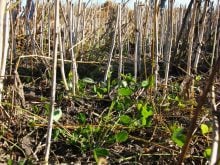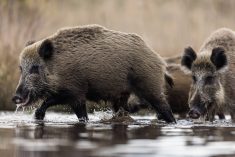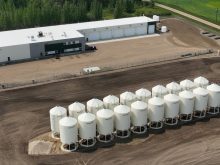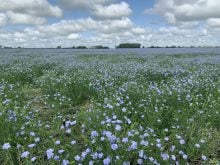The latest options include material made with soybean oil and oleic acid that is modified to also include citric acid
Researchers at Ontario’s University of Guelph are developing a bale wrap made from organic materials to replace 3,500 tonnes of plastic currently being used for wraps on Canadian farms.
U of G engineering professor Erica Pensini said the project is making steady progress by working with southern Ontario farmers to develop a product that will work as well as plastic.
Cutin from potatoes, which provides a natural protective barrier and water resistance in plants, and the corn protein zein, which provides flexibility, were some of the natural materials being used in experiments to develop the organic bale wrap.
Read Also

Using artificial intelligence in agriculture starts with the right data
Good data is critical as the agriculture sector increasingly adopts new AI technology to drive efficiency, sustainability and trust across all levels of the value chain.
“What we achieved at that point is a material that was bendable but not stretchable,” said Pensini.
Using native zein also required adjustments because field testing found rodents were attracted to the material.
Experiments using linseed oil and oleic acid derived from olives were also used in experiments to help make the product non-permeable, and to allow it to be sprayed on bales.
But spraying the material on bales without an even surface provided challenges as well.
“So, we started using that material to make pre-fabricated wraps,” said Pensini.
That has proven to be effective, can be easily fabricated on-farm as a sheet of material that can be applied to a bale but has the limitation of being bendable but not stretchable.
“The last generation material that we’ve made is with soybean oil and oleic acid and they are stretchable,” said Pensini, adding that was modified to also include citric acid.
While easy to make in a lab, the current challenge is developing ways to be able to scale up production for large operations, and while earlier generations of the product could be air dried, the newest version does require being cured in an oven.
“That’s a limitation in the lab but if you were to have a (manufacturing) facility, it wouldn’t be an issue,” she said.
The need to reduce dependence on fossil-fuel derived products such as plastic along with the waste they produce is a continued driver to refine an organic replacement, said Pensini.
“We have this base recipe and it works,” said Pensini, who added researchers are continuing to experiment with different materials to refine that recipe.
“I think that we can phase out plastics but we’re not yet at the point of commercializing this,” she said. “Producing this at a larger scale isn’t a big issue but to find a producer you need to show that you’ve trialed it and that it works.”
Experiments using the material as cover for silage piles is also underway but while the material is biodegradable, it’s not compostable as of yet, comparing its properties to a material like wood.
“Is wood biodegradable? Absolutely. Is it toxic? Not at all. But will it fall apart in a summer if I leave it out? No,” said Pensini.
That’s not a liability for the product, she added, as it shows the strength on the protective material that could one day displace the need for plastics. As for projected cost, Pensini said the market price for plastics will continue to be lower, but when factoring in environmental aspects of disposing of them, the goal is to have the organic material comparably priced.
The research project is currently being funded by Ontario Beef Producers, Dairy Farmers of Ontario and the provincial agriculture ministry.
















